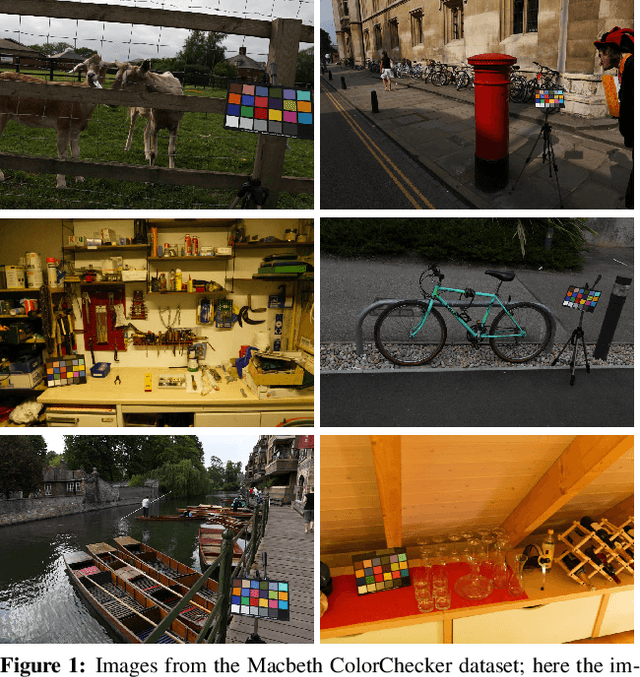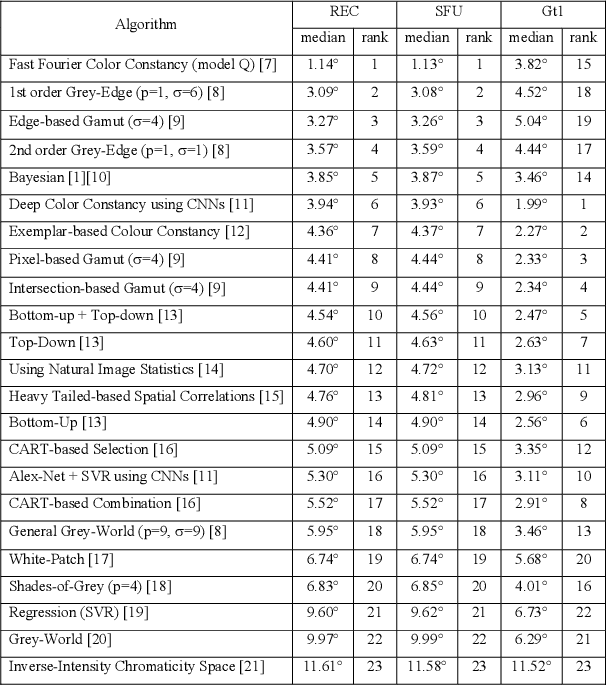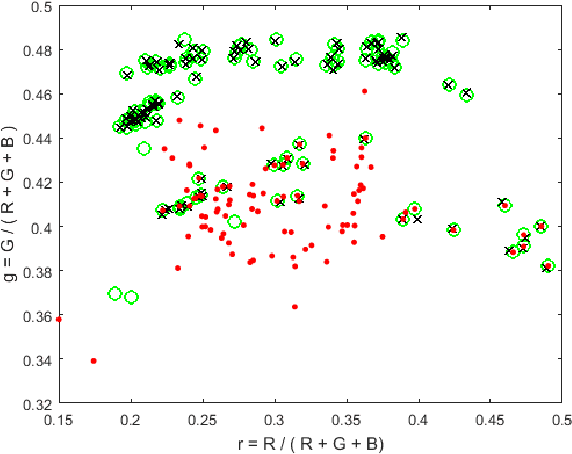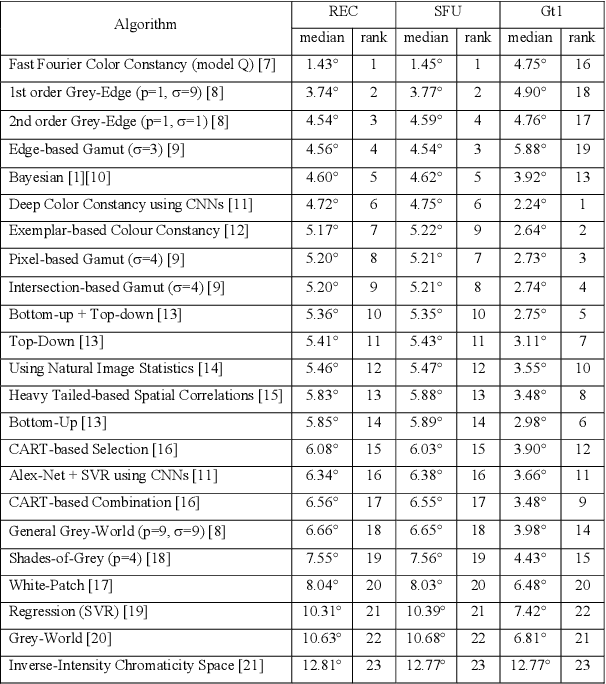Ghalia Hemrit
Revisiting and Optimising a CNN Colour Constancy Method for Multi-Illuminant Estimation
Nov 03, 2022Abstract:The aim of colour constancy is to discount the effect of the scene illumination from the image colours and restore the colours of the objects as captured under a 'white' illuminant. For the majority of colour constancy methods, the first step is to estimate the scene illuminant colour. Generally, it is assumed that the illumination is uniform in the scene. However, real world scenes have multiple illuminants, like sunlight and spot lights all together in one scene. We present in this paper a simple yet very effective framework using a deep CNN-based method to estimate and use multiple illuminants for colour constancy. Our approach works well in both the multi and single illuminant cases. The output of the CNN method is a region-wise estimate map of the scene which is smoothed and divided out from the image to perform colour constancy. The method that we propose outperforms other recent and state of the art methods and has promising visual results.
Rehabilitating the ColorChecker Dataset for Illuminant Estimation
Sep 17, 2018



Abstract:In a previous work, it was shown that there is a curious problem with the benchmark ColorChecker dataset for illuminant estimation. To wit, this dataset has at least 3 different sets of ground-truths. Typically, for a single algorithm a single ground-truth is used. But then different algorithms, whose performance is measured with respect to different ground-truths, are compared against each other and then ranked. This makes no sense. We show in this paper that there are also errors in how each ground-truth set was calculated. As a result, all performance rankings based on the ColorChecker dataset - and there are scores of these - are inaccurate. In this paper, we re-generate a new 'recommended' set of ground-truth based on the calculation methodology described by Shi and Funt. We then review the performance evaluation of a range of illuminant estimation algorithms. Compared with the legacy ground-truths, we find that the difference in how algorithms perform can be large, with many local rankings of algorithms being reversed. Finally, we draw the readers attention to our new 'open' data repository which, we hope, will allow the ColorChecker set to be rehabilitated and once again to become a useful benchmark for illuminant estimation algorithms.
 Add to Chrome
Add to Chrome Add to Firefox
Add to Firefox Add to Edge
Add to Edge